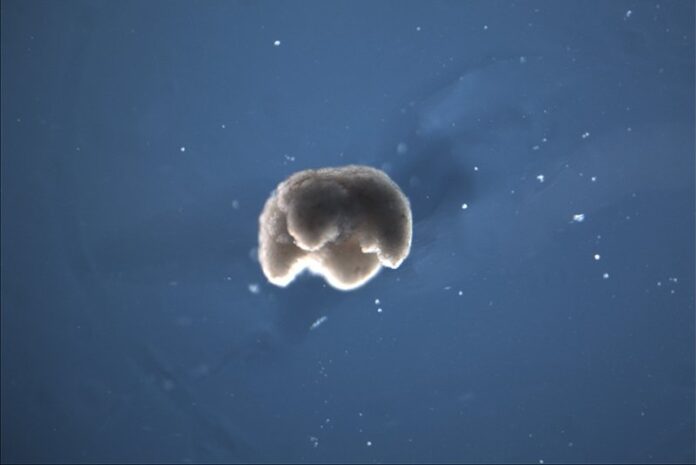Programming stem cells from a living creature to do whatever functions we want has led to the first living machines that can divide and propagate. They are small, the size of a sand particle, but take a bunch of them and they can move objects. The results published in the Proceedings of the National Academy of Sciences (PNAS) are the work of researchers from Tufts, Harvard, and the University of Vermont.
Harvested from African frogs, these stem cells are living robots. Named Xenobots after the Latin name of the frog, Xenopus laevis, they were created by manipulating the harvested cells using a supercomputer to reconfigure them.
In the news release from the University of Vermont back in January of last year, it describes the process by which the Xenobots were created, completely biological machines created using an evolutionary algorithm.
Experimenting with assembling and reassembling the Xenobots, hundreds of programs were tried to come up with the final design. Many of the results were abandoned while the most promising were kept and refined mimicking evolutionary paths in nature.
The press release describes what was created, however, as anything but natural stating the end product as “forms never seen in nature” made from cells from the frog’s skin and heart and trained to do tasks. These “evolved and engineered” cells are to some extent self-organizing. Some are programmed and configured to transport nano-sized objects such as small amounts of medication to be delivered to specific locations in a human body. Others can be tasked to clean up pollutants.
One of the concerns of the research team is unintended consequences. When in the last month they announced the Xenobots were capable of reproduction it brought to mind Michael Crichton’s 2002 science fiction novel, Prey. That story was about a laboratory release of artificial nanobot life that could replicate, self-organize, and take the shape of living things including people. Soon Crichton’s “Xenobots” turned into predators that consumed almost every living thing in their path including people. And because they were infused with artificial intelligence could not only form the shape of a person but act and talk like one. It was pretty creepy in “The Invasion of the Body Snatchers” kind of way.
The Xenobots created by this research team, however, we are told have only limited replication capability. They can do it once by themselves and produce offspring smaller, weaker and incapable of further reproduction. A further self-limiting control allows for this reproduction to take place in very controlled environmental conditions.
So for now we are in no danger from these tiny Frankensteins that have to date only organized themselves into cell clusters of up to 3,000 to work together on tasks. Nothing bigger, and still confined to the laboratory in which they were created. But what are the consequences should the creation exceed its creators’ control limits?
If you are a science fiction fan like me, with so many films and stories ending with a question mark, it shouldn’t be too much of a surprise that this posting ends that way as well with this question:
Once outside the petri dish or lab where they were created, could Xenobots run amok?
















